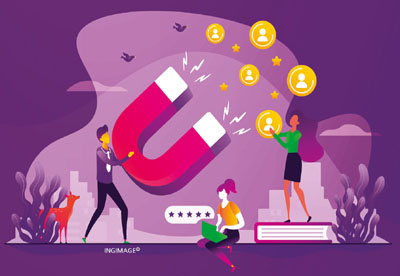CUSTOMER SATISFACTION

PERSONALISATION
The new buzz is about leveraging technology to adjust environmental attributes automatically to suit the profiles and preferences of individuals
BY Rehan Fernando
Whether it’s walking into a room and the lighting changes the moment you walk in, or a car moves the seat as you reach it or a hotel room has your favourite ambient music playing automatically… the world is moving towards greater personalisation to please discerning individuals. Here are some examples of how greater personalisation is becoming possible.
HOME Most people spend a substantial portion of their time at home with the family; and no doubt, this will be a focal area for personalisation initiatives.
Sensors and biometrics can detect an individual as well as his or her movements. This information is used to alert devices such as lighting, air conditioners and speaker systems that are connected across the Internet of Things (IoT).
The result is that environmental attributes such as ambient lighting, temperature and background music in rooms will change to suit the personal preferences of an individual who walks in. Taking a step further in ultra-modern houses, even the wall colours, digital paintings and backgrounds will adjust accordingly.
A virtual home assistant would be able to automatically adjust voice and tone to suit parents, teenagers and kids in the household, and facilitate friendlier and more personalised interaction.
OFFICE With the move away from dedicated rooms and workstations to hot desks in modern tech savvy offices, there is increasing potential for personalisation of workspaces.
Biometrics and sensors can be used to identify an employee and customise a workstation in terms of lighting, desktop or laptop themes, accessibility settings and other attributes without human intervention.
Personalisation will help employees feel more welcome and comfortable even though the hot desk isn’t a dedicated workspace for them. This means it’s possible to improve asset utilisation without compromising on comfort and maybe even enhance the employee experience.
VEHICLE Many of us enjoy the pleasure of driving. Vehicle manufacturers have competed for years on improving speed, performance, safety, fuel efficiency, exterior design and interior comfort among other attributes. The focus of differentiation is now moving towards personalisation.
The position of the seat and steering wheel, gear type and other drive settings, as well as ambient lighting, music and temperature, are adjusted automatically to suit the profile of the driver. The driving assistant system will adjust settings to suit the driver while the theme on display panels will also change automatically.
In addition, sections of the car will be personalised to suit each passenger who boards the vehicle.
INFLIGHT With personalisation, one can simply board a flight to find his or her seat automatically changed to preferred space settings, choice of media selected by default on inflight entertainment and menu selections (including beverages) filtered on the basis of preferences that had been previously observed through analytics.
Ambient lighting will also automatically dim for passengers who prefer to sleep through a flight. The difference between the travel experience of today and that of the near future is the reduction of human involvement and its substitution by digitally shaped personalisation.
HOTELS Many resort and hotel operators are investing in new technologies to increase personalisation. The guest’s preferences may be observed over time by leveraging analytics and sometimes even enhanced through AI.
These data points are then used for personalisation so that a guest would walk into a hotel room with relevant environmental attributes such as lighting, temperature, background music, television channel selection and window blinds adjusted automatically to meet his or her preferences.
DIGITAL The online world has embraced personalisation for quite some time, the difference in recent years being the move towards leveraging more analytics and artificial intelligence to drive the process.
Common examples include web pages that display content that fits the reader’s interests, screen layouts tailored to the user’s preferences and even suggestions that are in line with the person’s needs.
VIRTUAL Ranging from backdrops in video calls to customised characters that depict an individual in augmented or virtual environments, there are many new personalisation options being made available. Such choices provide a greater sense of identity and satisfaction to an individual.
Though personalisation was often considered a premium offering in recent years – and sometimes even restricted to high spending customers – going forward, it will become far more accessible, commercial and viable for the masses.
The move towards personalisation brings exciting opportunities for organisations that aim to enhance the customer experience. It also creates new dimensions when assessing competitive positioning.
One may wonder whether organisations will turn towards personalisation as a key differentiator… could it become more of a base expectation among customers or maybe even a determinant of organisational success in the not too distant future?
It will be interesting to watch developments in this space.





Leave a comment